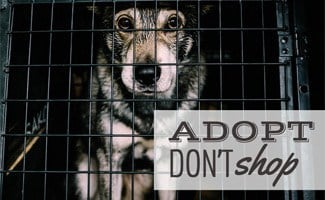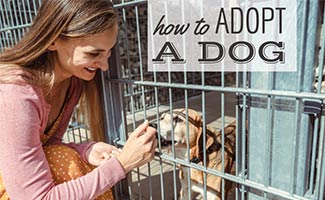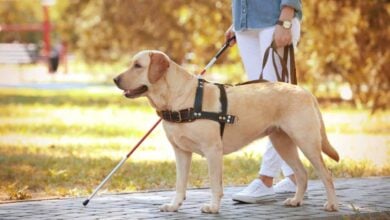Secrets To Picking The Right Dog Breed
When you purchase through links on our site, we may earn a commission. Here’s how it works.
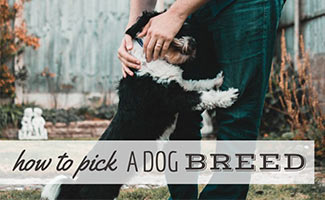
Picking the right dog breed for you should not be taken lightly. The decision should involve the entire family and take many factors into account. When it comes to choosing a pup, it is always crucial to research the dog you are seeking. There are several things to consider first if you are wondering, “What is the best dog breed for me?”
Table of Contents
Whether choosing to adopt from an animal shelter, a breed rescue, or a breeder, the journey cannot begin until you have selected which type of dog to get. Let’s learn more about choosing a dog breed to fit in with your family and lifestyle.
How To Pick The Right Dog Breed
Many factors go into choosing a dog breed. There are many areas owners must consider. Some of these critical considerations include:
- Compatibility with children
- Energy level
- Size
- Working vs. nonworking breeds
- Grooming care
- Special needs
- Cost and long-term expenses
Some families go in knowing that they want a working dog that can perform search and rescue with a designated handler. Some want a breed that sheds less than others. And some choose a breed that has lower energy levels. First-time owners will want a breed that is easier to train and less hyper or independent.
Dog Breed Selection Checklist
While there are many criteria to consider, these are among the most popular ones:
- Age
- Coat length
- Shedding
- Activity level
- Size
- Family-oriented nature
- Trainability/Intelligence
A Dog’s Age
Age can play a large part in determining the right dog for you. If there are young toddlers in the house, you may be better suited to a grown dog that will not teethe on your young children and their toys. Another plus in picking a grown dog is that the rescues and breeders may be able to tell you how the dog interacts with children.
On that note, some families choose to adopt a new puppy that can grow up with their child. With obedience classes, this arrangement can work just as well as adopting a fully grown dog.
Age is also a factor in a dog’s energy level. If you are looking for a running companion, selecting a senior dog is not the right option for you. However, if you are looking for a more sedate dog, then an older dog may be a better choice. Looking at your own lifestyle is part of answering the question, “What is the right dog breed for me?”
Coat Length And Shedding
Some family members may be particularly sensitive to certain varieties of fur. While there is no such thing as a hypoallergenic dog (the allergen is in the saliva, not the coat), some allergies are made worse by long-haired dogs.
Some dogs shed considerably less than others. For example, a Dachshund sheds a lot less than a Collie.
Hair shedding is not always a matter of allergies. It can be a matter of housekeeping. If you are looking for a dog that won’t leave you running around with a vacuum twice a day, you may prefer a short-haired dog.
As a general rule, dogs with longer coats shed more than those with shorter coats, and dogs with wire hair shed less than dogs with silky coats.
Find the best vacuum for pet hair
Activity Level
Families who live in an apartment are not well suited to dogs with high energy levels unless the owners are dedicated to providing an adequate amount of exercise. Many families start with this intention and wind up dropping the ball. A high-energy dog without any outlet for their energy will likely become bored and destructive.
If your family has its heart set on a specific breed, it is worth considering an older dog of the desired type.
Working Dog Breeds = High Energy
In general, working dog breeds have high energy levels. Working dog breeds are one of the AKC classifications. Other classes include sporting, hound, terrier, toy, non-sporting, herding, and miscellaneous.
Dog Size
A dog’s size includes both its height and weight. Families living in a small apartment should consider a smaller dog. If you have small children, be careful when selecting a giant breed. While breeds like Mastiffs can be graceful and gentle with children, they also do not realize the sheer enormity of their size and can easily knock down small children.
Likewise, small breeds that are trained for herding or ratting can nip at children’s heels in an attempt to corral them like sheep. In most cases, it is possible to train this behavior out of your dog. So, it shouldn’t be a reason to write off a breed.
When selecting a mixed breed puppy from a shelter, there is no way to be sure what size a dog will be once fully grown. However, shelter officials can often help you determine the approximate size of your fully grown dog by guessing which breeds make up the dog.
Family-Oriented Nature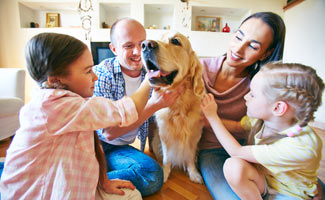
Some dogs are naturally good with children. The Labrador Retriever is primarily known for its loving nature towards all. However, some dogs are not as good with children. An Alaskan Malamute is intended for outdoor work and is not very content indoors with a family.
This is not to say that all Alaskan Malamutes will not be good with children, nor is it to say that all Labradors are great with children. But, generally speaking, some breeds mesh better with a family that contains young children than others.
Find the best guard dogs for families
Trainability And Intelligence
If you are looking for a dog to go on walks with you, you want it to heel. If you are looking for a dog to catch a frisbee, you will need to know it is smart enough to be trained to do so. The examples go on and on. Thus, the brighter the dog, the more trainable it is, in many cases.
But some dogs are almost too smart for their own good. This makes them stubborn and challenging to train.
Get to know the smartest dog breeds
Dog Breed Selection Interactive Tool
We recently discovered this interactive breed selection tool to help you narrow down the best dog type for you. This gives you more information as you head into the exciting phase of meeting new dogs!
Visit Your Local Animal Shelter Or Rescue Group
Many families frequent the local animal shelter and pick out a dog they fall in love with. This is a perfect way to incorporate the whole family into your decision. Animal rescue organizations temporarily house pets that are homeless and are seeking their forever home. These shelters tend to have lower adoption fees than a breeder or pet store, and you won’t have to worry about the corruption of a possible puppy mill.
After evaluating what you are looking for, you can begin frequenting your local shelter and working with the staff there to find a dog breed or mix. Let them know exactly what you are looking for in your future dog.
The great thing about adopting from an animal shelter is that your new pup will leave room for another homeless animal when you bring it home. And you get a wide selection, with your pick of age, size, temperament, etc. You can choose the dog who you truly connect and bond with.
Fostering a local rescue pup may also be a great way to get your family used to the idea of caring for a dog before you adopt. It will also help keep a dog alive longer than may happen in the shelter since it opens up extra space for another dog in need.
Why consider adopting from a rescue organization
Try A Local Rescue Group
Some people choose to go with a local rescue group instead of a shelter. Most, but not all, rescues specialize in specific breeds. So, it is essential to research what breed would be the best match for you before contacting rescues. Nearly every breed has a rescue organization dedicated to it, and usually, each one has a division throughout the Northeast, Southeast, Central, and Western United States. So it is very possible to find a dog breed that is specific or very close to what you want.
Like a shelter, rescue organizations generally have a great gauge of the dog you will be selecting. Since rescue organizations generally foster all of their dogs to volunteers for a selected time period, they are able to give you a full picture of the dog you are looking at.
Another plus to selecting your dog from a rescue is that you can get a purebred dog of any age. Oftentimes, the older dogs are partially or fully trained when they come home to you.
Tips For Using A Breeder
If you know which breed of dog you are looking for, you may choose to go straight to a breeder. It is critical to research many breeders and ask as many questions as possible when shopping for a purebred dog. Many websites offer lists of questions to ask a potential breeder.
Carefully review the certifications of the dog’s lineage. When you are paying a large amount of money for a new dog or puppy, you must ensure its health by checking over hip, elbow, and eye certifications. You should also ask about the health of both parents to make sure that there are no major health problems in the lineage.
Share details about your lifestyle and what you are looking for in a dog. By understanding your needs, a breeder will be able to assess new puppies in terms of their dominance, shyness, and overall personalities. These factors are easy for a breeder to determine as they watch the puppies develop during their first few months of life.
Make sure that you read the contract that your breeder gives you to sign before completion of the purchase. Most often, a breeder’s contract will stipulate that your dog must be spayed or neutered and that if you ever need to give up your dog, it must be returned to the breeder. In general, purchasing a dog from a breeder is more costly and comes with more stipulations than a rescue.
Learn How To Find A Reputable Breeder
Take Your Time. It’s A Long-Term Decision
Choosing the right dog and breed can take a lot of work and a lot of planning. But why shouldn’t it be a time-consuming “project”? After all, bringing a dog home is a decision that can last as long as sixteen or more years.
Things to consider before you adopt
Deciding which traits and breeds you like best is a great way to get started in picking your new family member. But, much like people, dogs are individuals. Each dog has its own personality, likes and dislikes, etc.
So, ideally, picking out your dog should involve multiple visits. Most shelters and rescues, as well as breeders, require that potential families visit their new dog at least twice before bringing it home so that they are fully aware of the dog that they are getting.
The most significant factor in bringing home your new dog and creating a happy and healthy home is patience. Make sure to take your time and do your research. Then, you will be well on your way to picking the best dog for you and your family.

